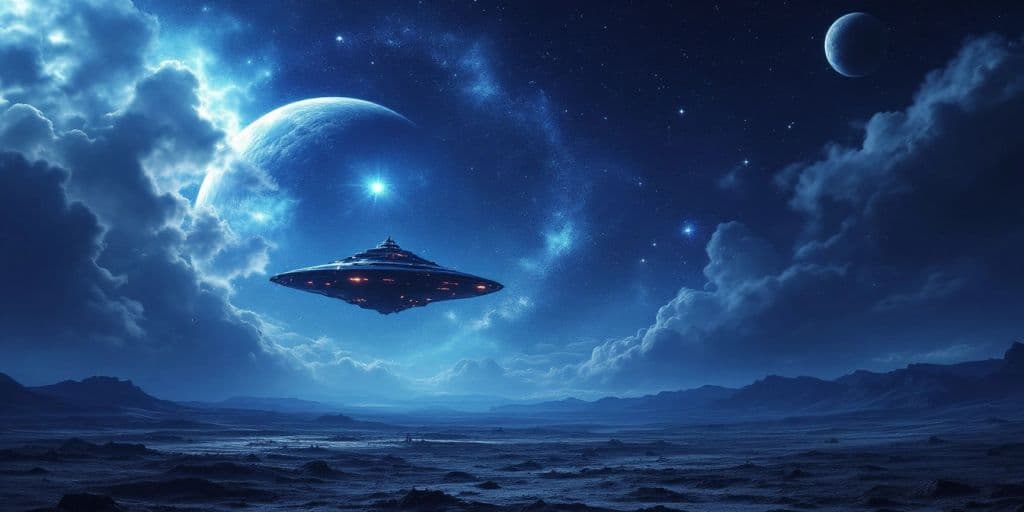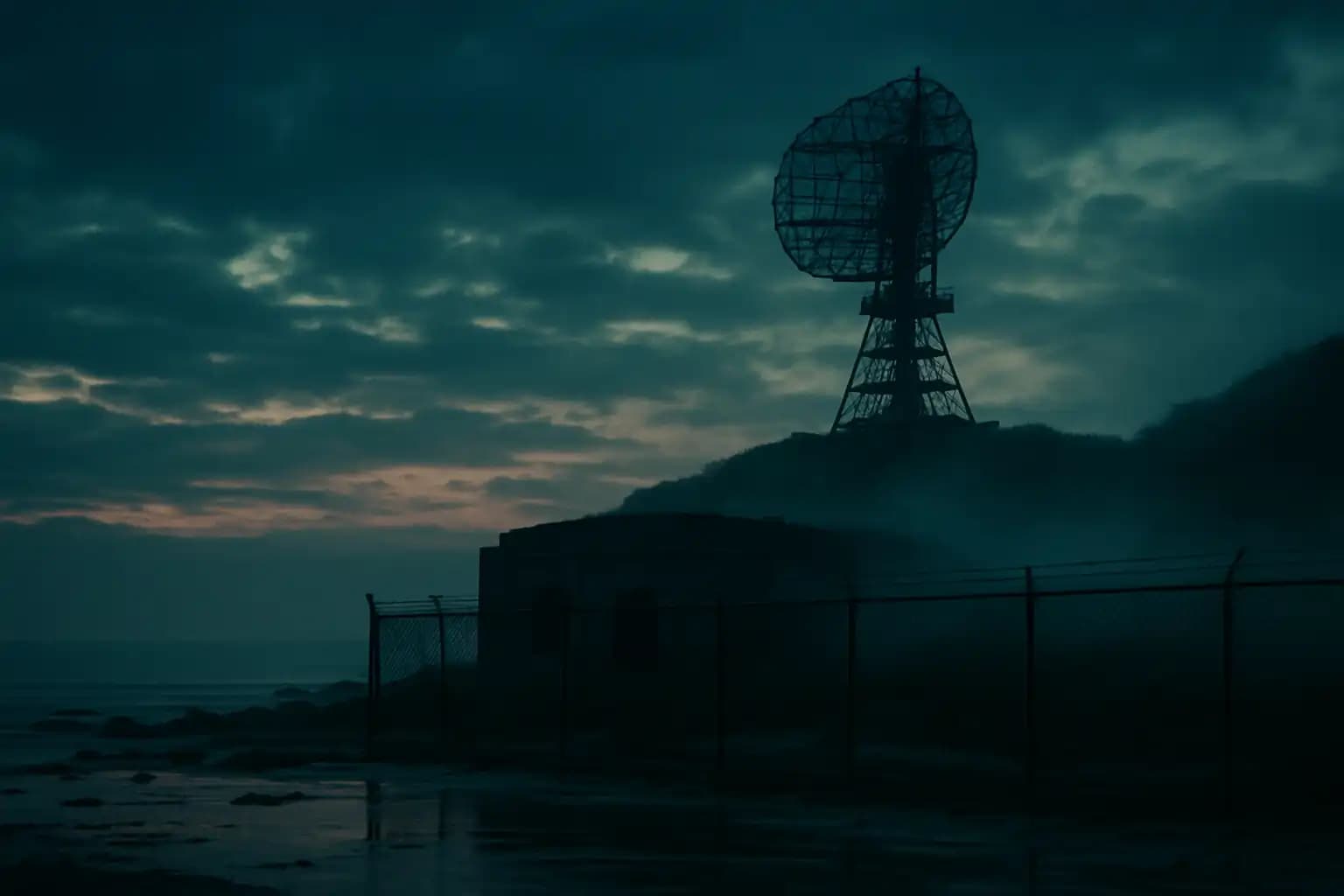Space exploration has always sparked curiosity and wonder, but it has also led to a variety of wild conspiracy theories. From claims that the moon landing was faked to ideas about alien technology, these theories often blend fact and fiction in surprising ways. In this article, we will explore some of the craziest conspiracy theories surrounding space exploration, examining their origins and the reasons people believe in them.
Key Takeaways
- Many conspiracy theories about space are based on misunderstandings of science.
- The Apollo moon landings are often targeted by hoax theories, despite strong evidence.
- Beliefs like the Earth being flat persist even with overwhelming scientific proof to the contrary.
- Ideas about hidden alien technology or planets like Nibiru reflect our fears and curiosity about the unknown.
- Conspiracy theories can distract from real scientific achievements and discoveries.
1. Apollo Moon Landings
The Apollo Moon landings are often seen as one of humanity’s greatest achievements. On July 20, 1969, Neil Armstrong and Buzz Aldrin became the first humans to walk on the lunar surface. However, this monumental event sparked numerous conspiracy theories claiming it was all a hoax.
The Claims
- The Flag Flapping: Some argue that the American flag appears to be waving in the wind, which is impossible on the moon due to the lack of atmosphere. In reality, the flag had a horizontal rod to keep it extended, creating the illusion of movement.
- No Stars in Photos: Critics point out that there are no stars visible in the lunar photos. This is because the camera settings were adjusted for the bright lunar surface, making stars too faint to see.
- Footprints Without Craters: Skeptics question why there are clear footprints but no visible blast craters from the lunar module. The module’s weight was distributed evenly, causing minimal disturbance to the surface.
The Evidence
| Evidence Type | Description |
|---|---|
| Photos | Lunar Reconnaissance Orbiter has captured images of the Apollo landing sites, showing equipment left behind. |
| Testimonies | Over 400,000 people worked on the Apollo program, making it highly unlikely that such a large-scale conspiracy could be kept secret. |
| Scientific Analysis | Various scientific studies have debunked the myths surrounding the moon landings, emphasizing the authenticity of the missions. |
The belief that the moon landings were faked often stems from a distrust in government and authority. This skepticism can lead to the spread of misinformation, making it crucial to rely on scientific evidence and facts.
2. NASA Hoax
Many people believe that NASA is not really about exploring space but is instead involved in creating elaborate hoaxes. Some even claim that the Apollo moon landings were staged. This idea has gained traction over the years, especially with the rise of social media, where hashtags like #NASAhoax circulate widely.
Common Claims
- The Moon Landing Was Staged: Some argue that the moon landing was filmed on a movie set, claiming that the U.S. government wanted to win the space race against the Soviet Union.
- Fake Images: Conspiracy theorists often say that stunning images of planets and stars are actually computer-generated images (CGI).
- Mistrust in Government: Many who believe in this theory often cite a general distrust in government as their reason for skepticism.
Why These Theories Persist
Despite overwhelming evidence supporting NASA’s missions, including moon rocks and photographs from lunar orbiters, these theories continue to thrive. A survey from 2019 showed that about 10% of Americans still believed the moon landing was a hoax. This ongoing belief can be attributed to:
- Misinformation: False information spreads quickly, especially online.
- Cultural Skepticism: A growing number of people question official narratives.
- Media Influence: Movies and documentaries often sensationalize these theories, making them more appealing.
The belief in the NASA hoax reflects a deeper mistrust in authority and a desire for alternative explanations to significant historical events.
In conclusion, while the idea of a NASA hoax is captivating to some, the evidence overwhelmingly supports the reality of space exploration and the achievements of NASA.
3. Flat Earth
Flat Earth theories claim that our planet is shaped like a pancake. This idea, which first gained traction in the 1950s, has found new life thanks to the internet. Flat Earth believers often ignore centuries of scientific evidence. They argue that the horizon always appears flat, which they believe wouldn’t happen if the Earth were round.
Key Points:
- Historical Evidence: Ancient Greeks calculated the Earth’s circumference.
- Astronauts’ Views: Many astronauts have seen the Earth from space and confirmed its round shape.
- YouTube’s Role: Flat Earthers say YouTube was key in helping them spread their message.
Why Do People Believe?
- Mistrust in Science: Some people feel skeptical about scientific institutions.
- Desire for Simplicity: A flat Earth can seem easier to understand than complex scientific concepts.
- Community: Many find a sense of belonging among fellow believers.
The Flat Earth theory shows how misinformation can spread rapidly in the digital age, often overshadowing established facts.
4. Planet Nine
The Mystery of Planet Nine
Many people believe that there is a hidden planet in our solar system, often referred to as Planet Nine. This planet is thought to be lurking far beyond Neptune, and some scientists are actively searching for it. The idea is that it could explain the strange movements of certain objects in the Kuiper Belt, a region filled with icy bodies.
The Threat of Planet Nine
In 2016, a sensational claim suggested that this mysterious planet could potentially destroy Earth. However, experts, including Mike Brown from Caltech, have reassured us that if Planet Nine exists, it poses no real danger to our planet. The idea of it being a threat is more of a dramatic story than a scientific fact.
Why Are We Looking for Planet Nine?
Scientists are interested in finding Planet Nine for several reasons:
- Understanding the Solar System: Discovering this planet could help explain the unusual orbits of distant objects.
- Expanding Our Knowledge: Finding new planets can teach us more about how our solar system formed.
- Curiosity: The search for new celestial bodies is a fundamental part of astronomy.
Conclusion
The search for Planet Nine continues, and while it may sound like a game of hide and seek, it is a serious scientific endeavor. As we explore the universe, we may uncover more about our own solar system and its hidden secrets.
5. Alien Research

Theories of Alien Research
Many people believe that alien research is happening secretly, especially at places like Area 51. This military base in Nevada is often linked to stories about aliens and UFOs. Here are some key points about this theory:
- Area 51 is said to be a site for studying alien technology.
- Some locals claim to have seen strange aircraft flying from the base.
- The U.S. government has confirmed the existence of Area 51 but keeps its activities secret.
Public Beliefs
Surveys show that a significant number of people think aliens have visited Earth. In fact, about 24% of Americans say they’ve seen a UFO. This belief is interesting because we have no solid proof that aliens exist. Here are some reasons why people might believe in alien research:
- Curiosity about the unknown.
- Desire for answers about life beyond Earth.
- Media influence, like movies and TV shows.
Scientific Investigations
There are also serious scientific efforts to explore the possibility of alien life. For example:
- The Galileo Project aims to find evidence of alien technology.
- NASA is studying unidentified aerial phenomena (UAPs) to understand what they are.
The belief in alien visits to Earth is spiraling out of control. Some 24% of Americans say they’ve seen a UFO. This belief is slightly paradoxical as we have zero evidence that aliens even exist. What’s more, given the vastness of space, the search for extraterrestrial life continues to be a fascinating topic for many.
6. Nibiru Cataclysm
The Origins of Nibiru
Conspiracy theorists believe in a dangerous planet called Nibiru. This idea started in the 1976 book "The Twelfth Planet" by Zecharia Sitchin. He claimed that ancient Sumerian texts mentioned a planet beyond Neptune that orbits the sun every 3,600 years.
Predictions and Failures
In the early 2000s, a self-proclaimed psychic named Nancy Lieder said that Nibiru would crash into Earth in 2003. When that didn’t happen, the date was changed to 2012, linking it to doomsday predictions. No astronomer has found any evidence of a planet on a collision course with Earth.
Why People Believe
Many people are drawn to the idea of Nibiru because:
- It offers a simple explanation for complex cosmic events.
- It plays into fears about the unknown.
- It connects to ancient myths, making it seem more credible.
Conclusion
Despite the excitement around Nibiru, scientists have found no proof of its existence. The idea remains a popular conspiracy theory, but it lacks scientific backing.
The universe is vast and mysterious, but that doesn’t mean we should jump to conclusions without evidence.
7. Face on Mars
In 1976, NASA’s Viking 1 spacecraft captured an image that many believed showed a face on Mars. This sparked wild theories about ancient aliens living on the Red Planet. However, NASA explained that the so-called face was just a pile of rocks creating a shadow that looked like a face.
The Original Image
The first image of the face was taken in grayscale, and it quickly became a topic of debate. Here are some key points about the image:
- Date Taken: July 25, 1976
- Spacecraft: Viking 1
- Location: Cydonia region of Mars
Follow-Up Investigations
NASA didn’t stop there. They took higher-resolution images later on:
- Mars Global Surveyor: 1998
- Mars Reconnaissance Orbiter: 2001
These images showed that the face was merely a natural formation, not evidence of extraterrestrial life.
Public Reaction
Despite NASA’s explanations, many people still believe in the face’s significance. This belief is fueled by:
- Media Coverage: Sensational stories in newspapers and TV.
- Documentaries: Films that explore the possibility of alien life.
- Online Forums: Discussions that keep the theories alive.
The fascination with the Face on Mars shows how easily people can be drawn into conspiracy theories, especially when it involves the unknown.
In conclusion, while the face on Mars captured imaginations, it remains a natural rock formation, reminding us of the power of perception and belief in the realm of space exploration.
8. Alien Death Star

The Mysterious Moon Iapetus
Saturn’s moon Iapetus has sparked wild theories due to its unique appearance. Some claim it resembles the Death Star from the "Star Wars" movies, especially because of a large crater that looks like the weapon’s superlaser focus lens. This has led to speculation that it might be an artificial object created by aliens.
Claims of Alien Construction
In 2016, an article suggested that Iapetus is not just a moon but a crafted object by extraterrestrial beings. The evidence? A photo from NASA’s Cassini spacecraft showing a line around the moon’s equator. However, this line is simply a mountain ridge, and Iapetus is made of regular rock and ice.
Other Similarities
Interestingly, another moon of Saturn, Mimas, also looks like the Death Star due to its giant crater, Herschel. This resemblance has fueled even more conspiracy theories about alien technology in our solar system.
Conclusion
While these theories are entertaining, they often lack solid evidence. Iapetus and Mimas are fascinating celestial bodies, but they are likely just natural formations.
The idea of alien technology hidden in our solar system captivates many, but it’s essential to approach such claims with skepticism.
Summary of Key Points
- Iapetus resembles the Death Star, leading to conspiracy theories.
- Claims of it being an alien construction are based on misinterpretations of images.
- Mimas also shares a similar appearance, adding to the intrigue.
| Moon Name | Resemblance | Actual Composition |
|---|---|---|
| Iapetus | Death Star | Rock and Ice |
| Mimas | Death Star | Rock and Ice |
9. Saturn’s Alien Technology
Saturn is a fascinating planet, and some people believe it might hold alien technology. One of the most talked-about features is Saturn’s hexagon, a strange six-sided shape at the planet’s north pole. This unusual formation was first seen by NASA’s Voyager spacecraft in 1980 and has sparked wild theories about its origin.
The Hexagon Mystery
Many conspiracy theorists suggest that the hexagon is not a natural phenomenon but rather a sign of advanced alien engineering. Here are some key points about this theory:
- Shape: The hexagon is a perfect six-sided shape, which is rare in nature.
- Size: It spans about 14,500 kilometers (9,000 miles) across, making it larger than Earth.
- Weather: Some scientists believe it is a massive storm, similar to hurricanes on Earth, but its geometric shape raises questions.
Claims of Extraterrestrial Objects
Some former NASA employees have claimed that there are objects of extraterrestrial origin within Saturn’s rings. They suggest these objects might be sending signals to Earth. Here are some notable claims:
- Radio Signals: Reports of unusual radio signals coming from Saturn’s vicinity.
- Unidentified Objects: Sightings of strange objects that do not match known space debris.
- Advanced Technology: Speculation that these objects could be remnants of alien spacecraft.
The mysteries of Saturn challenge our understanding of the universe. Are we alone, or is there more to discover?
In conclusion, while many scientists believe the hexagon is just a natural weather pattern, the idea of alien technology on Saturn continues to capture the imagination of conspiracy theorists and space enthusiasts alike. The truth may be out there, waiting to be uncovered!
10. Mars’ Size and More
Mars is as Big as the Moon?
Many people believe that Mars can appear as large as the full moon in the night sky. This idea started in 2003 and has been shared widely, especially on social media. However, Mars will never look as big as the moon. Instead, it will always appear as a small red dot. If you want to see Mars up close, using a telescope or looking at NASA’s images is the best way to go.
The Truth About Mars’ Size
Here are some key points about Mars and its size:
- Mars is about half the size of Earth.
- It is the fourth planet from the Sun.
- Mars is often called the "Red Planet" due to its reddish appearance.
Why Do These Myths Persist?
The myths about Mars’ size continue for several reasons:
- Misunderstandings from emails and social media.
- Excitement about space exploration.
- The human tendency to exaggerate.
The idea that Mars can appear as large as the moon is a classic example of how misinformation can spread quickly. Understanding the facts helps us appreciate the wonders of our universe better.
Conclusion
In conclusion, while Mars is a fascinating planet, it will never rival the moon in size when viewed from Earth. Instead, it remains a small yet intriguing part of our night sky, inviting us to explore its mysteries further.
Mars is a fascinating planet, known for its reddish color and unique features. It’s smaller than Earth, but it has some amazing landscapes, like the largest volcano and canyon in the solar system. If you want to learn more about Mars and other intriguing topics, visit our website for a treasure trove of information!
Final Thoughts
In the end, conspiracy theories about space exploration show us how curious and imaginative people can be. While some of these ideas might seem wild or silly, they reflect our desire to understand the universe and our place in it. It’s important to think critically about these theories and look for real evidence. Instead of getting lost in the stories, we should focus on the amazing discoveries that science continues to make. Who knows what we might find out next? The truth is often stranger than fiction!
Frequently Asked Questions
What are some common conspiracy theories about space exploration?
Some popular conspiracy theories include the idea that the Apollo moon landings were faked, that NASA is hiding the truth about aliens, and that the Earth is flat.
Why do people believe in these conspiracy theories?
Many people are drawn to conspiracy theories because they offer simple explanations for complex events, and they often distrust official sources of information.
Is there any evidence to support these theories?
Most conspiracy theories lack credible evidence and are often debunked by experts. For example, the moon landings are supported by extensive documentation and scientific data.
How do conspiracy theories spread?
Conspiracy theories often spread through social media, word of mouth, and online forums, where like-minded individuals share and reinforce each other’s beliefs.
What impact do conspiracy theories have on society?
Conspiracy theories can lead to misinformation, distrust in science and government, and even harmful behaviors, such as rejecting vaccines or other public health measures.
How can I tell if a conspiracy theory is true or false?
To evaluate a conspiracy theory, check the sources of information, look for expert opinions, and consider whether the claims can be supported by evidence.




